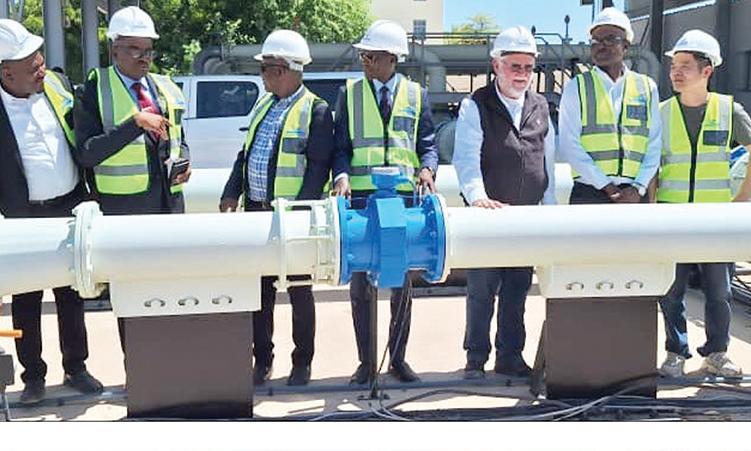Africa-Press – Namibia. THE Oshakati water purification plant is being expanded to improve water access for 500 000 people across Namibia’s central north through a N$743-million upgrade.
It will add 50 000 cubic metres to its output per day.
This was said by minister of agriculture, fisheries, water and land reform Inge Zaamwani-Kamwi when she presided over the groundbreaking ceremony for the project at Oshakati on Thursday.
“This project is part of the broader Namibia water sector support programme, a national priority intervention implemented by NamWater through a loan from the African Development Bank.
“With a total investment of N$743 million, this project reflects our government’s unwavering commitment to realising Vision 2030’s goals,” she said.
With completion expected in 26 months, the project promises to improve water security and public health, and support agriculture and smallholder food production.
The minister said water is life as it is the life source of crops, the nourishment of livestock, and the bedrock of food security.
“But more than that, access to clean, reliable water is a fundamental human right and a cornerstone of public health, education, and economic growth,” she added.
The minister said as a nation, Namibia faces acute water shortages being one of the driest countries in sub-Saharan Africa, with average rainfall of less than 250mm per year.
The north-central regions of Omusati, Oshana, Ohangwena, and Oshikoto are heavily reliant on the 160km canal and pipeline network that brings raw water from the Calueque Dam on the Kunene River in southern Angola.
“This vital bulk supply scheme, developed in the 1960s, is now under tremendous pressure.
The current Oshakati water treatment plant, commissioned in 1996, is no longer able to meet the soaring demand, especially during the dry season,” she said.
Zaamwani-Kamwi highlighted that the new plant will serve tens of thousands of residents, farms, businesses, and public institutions in the Oshana, Ohangwena, and Oshikoto regions.
“This is your project, built with you, for you, and because of you,” she said.
“Let it be a beacon of what we can accomplish when we align vision with action, leadership with service, and resources with justice,” she said.
The minister urged people to pay their water bills as NamWater operates on a cost-recovery basis.
“When we do not maintain, we lose everything we have built over the years. Let us all do our part by paying for the water we consume,” she said.
The minister also urged communities to safeguard the infrastructure.
“Let us stop acts of vandalism that damage infrastructure and delay progress. Water theft, illegal connections, and infrastructure sabotage are crimes against the people.”
Oshana governor Hofni Iipinge described the project as a bold and urgent response to real water access challenges faced by residents of the region.
“This expansion will change lives, sustain livelihoods, and unlock opportunity for thousands,” he said.
Iipinge praised the strategic location of Oshakati as a regional water hub, describing the extension as both a symbol of modernisation and a commitment to future generations.
NamWater chief executive Abraham Nehemia described the project as “a turning point in Namibia’s water security story”.
He said the extension will more than double capacity from 40 000 to 90 000 m3/day.
Nehemia also outlined complementary projects such as the Ogongo-Oshakati pipeline replacement, the Ondangwa-Omutsegwonime bulk water scheme, and canal rehabilitation, all working toward a resilient water supply grid.
During the two ground-breaking ceremonies for the N$140 million Outapi water infrastructure plant extension and the replacement of the Ogongo-Oshakati pipelines at Outapi in the Omusati region last year, then-minister of agriculture Calle Schlettwein said water is not just a necessity, but the foundation of life and a driving force behind economic development, social stability and public health.
For More News And Analysis About Namibia Follow Africa-Press






